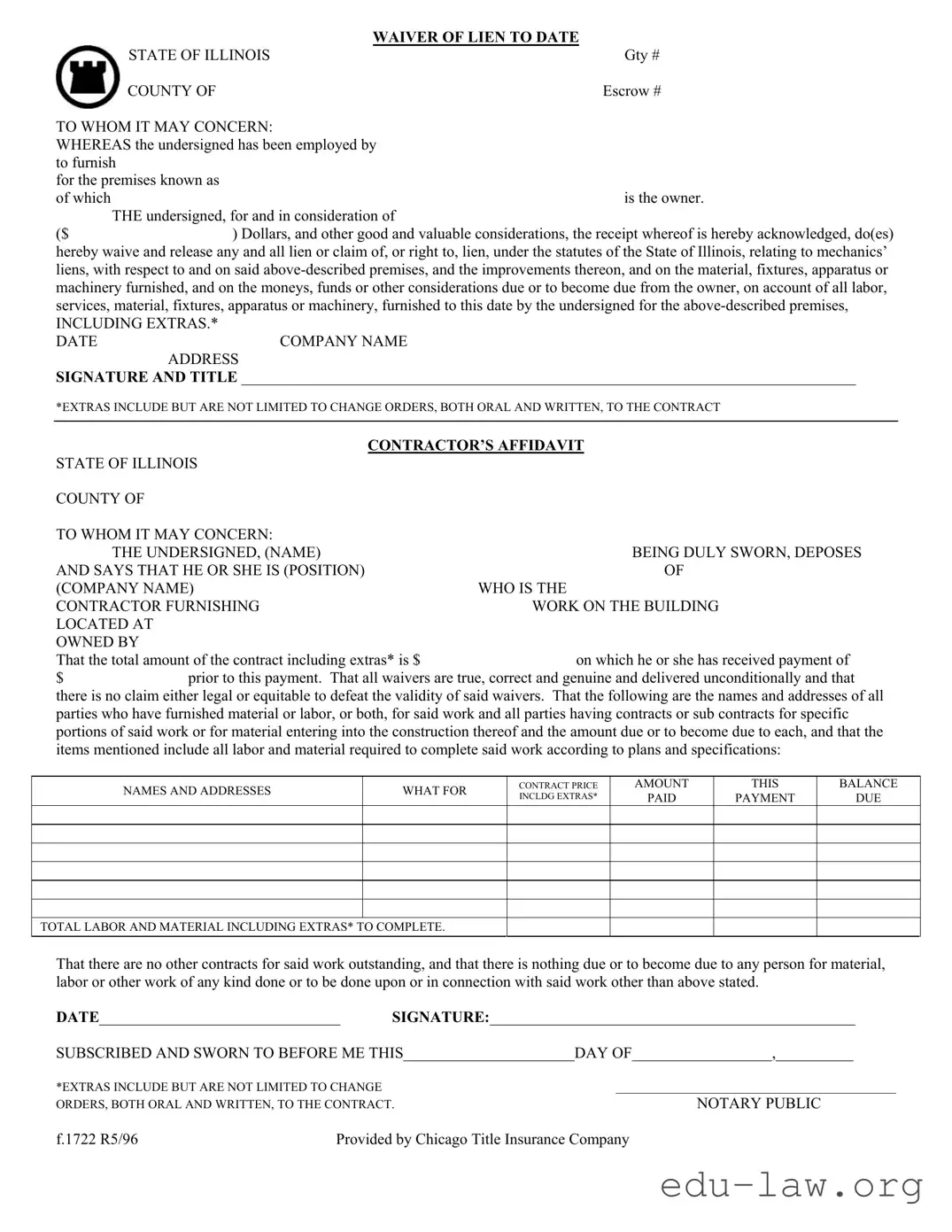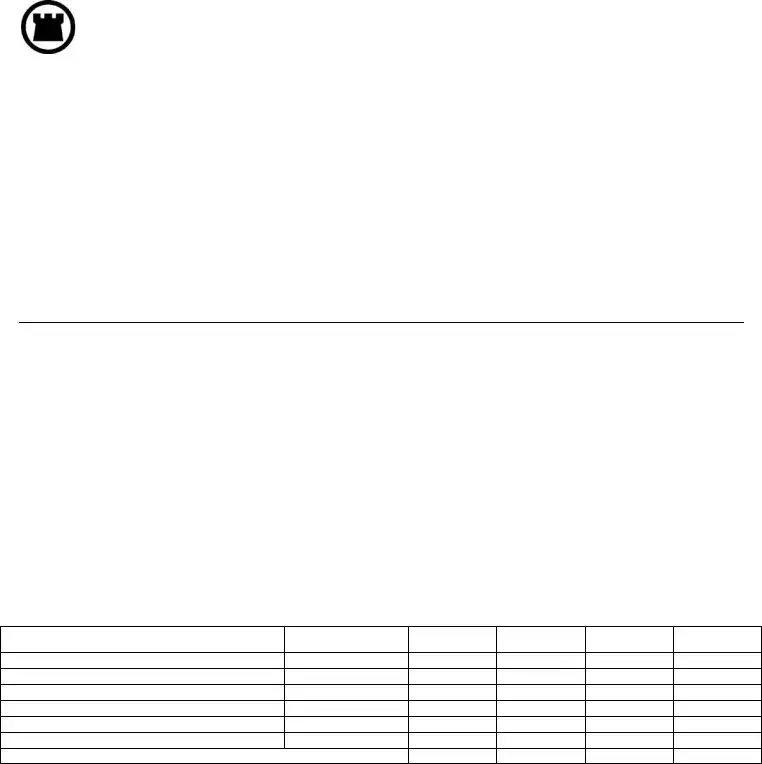What is the Chicago Title Waiver Format form?
The Chicago Title Waiver Format form is a legal document used in Illinois to waive the right to lien claims under mechanics’ lien statutes. This form is typically used by contractors or suppliers who have provided labor or materials for a property but wish to relinquish their right to file a lien against it, usually upon receiving payment. This assures property owners that they will not face unexpected claims for unpaid services related to the project.
Who needs to use the Chicago Title Waiver Format form?
This form is particularly important for contractors, subcontractors, and suppliers in the construction industry. If you have worked on a construction project and have been compensated for your services, you might consider using this waiver to officially confirm that you won't pursue a lien against the property. It protects the property owner from future claims and establishes clear communication between parties.
What are 'extras' and how are they addressed in the form?
Extras refer to any additional work or materials provided beyond the original contract terms. This can include changes requested by the property owner or unexpected expenses incurred during the project. The form explicitly states that extras are included and outlines that both oral and written change orders are accounted for, emphasizing the importance of documenting these additional services to ensure clarity in financial obligations.
What does it mean to waive a lien?
Waiving a lien means that the contractor or supplier relinquishes their right to file a legal claim against the property for unpaid labor or materials. When this is executed through the form, it indicates that the signer has been paid or is in agreement regarding the payment arrangements. It is a way to provide assurance that no further claims will be made, enhancing trust between the property owner and the contractor.
What information do I need to fill out the Chicago Title Waiver Format form?
To complete the form, you will need to provide details such as the company name, the property owner's name, the project location, the amount being waived, and specifics about any extras. You must also include the date, your address, and your signature along with your title. For comprehensive accuracy, it is essential to double-check that all collaborators’ names are correctly listed, along with any balances due.
Is a notary required for this form?
Yes, the Chicago Title Waiver Format form requires notarization. This means that after you have filled out the form, you will need to sign it in front of a notary public. The notary verifies your identity and ensures that you are signing the document willingly, adding an essential layer of authenticity and legal weight to the waiver.
What happens if I don’t use this form?
If you choose not to use the waiver form, you retain your right to file a lien against the property for unpaid work or materials. However, doing so may lead to disputes and potentially legal actions, which can be costly and time-consuming. The waiver helps clarify payment agreements and protects all parties involved, so opting out can complicate things for both you and the property owner.
Can the waiver be revoked once it is signed?
Generally, once the waiver is signed and notarized, it cannot be revoked. This means that the contractor or supplier acknowledges that they have been paid for their work, relinquishing any future claims regarding that payment. However, if there are issues or disputes regarding the payment itself, those circumstances may require further attention, possibly involving legal counsel to navigate the situation.
What should I do if I have more questions about this form?
If you have further questions about the Chicago Title Waiver Format form, consider reaching out to a legal professional who specializes in construction law or real estate. They can provide tailored advice that aligns with your specific situation. Additionally, you may want to consult the Chicago Title Insurance Company or resources they provide for further guidance on utilizing this form effectively.

